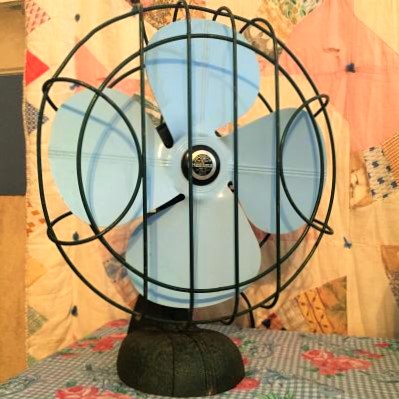This great vintage industrial electric fan carries the Handy Breeze name.
The
fan was made by the Chicago Electric Manufacturing Co. The base and
motor housing are a heavy cast iron, the cage and blades steel. The body is
painted in steel gray, the steel blade is painted slate blue, with the "Handy Breeze"
button in the center. This dates to the 1950's, I saw this in another antique store here in Portland. I was determined that if it worked, I needed it for my quilting room. At the front desk, we plugged it in and to my surprise, it ran great with the perfect hum! So now, it keeps the room cool while quilting on warm sunny days. |















Comments